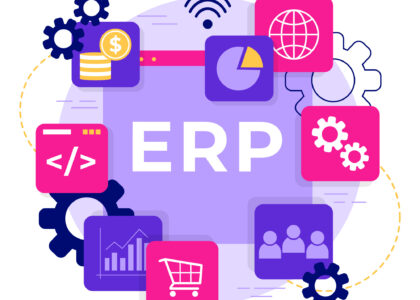Implementing an Enterprise Resource Planning (ERP) system on the cloud involves several steps to ensure a smooth transition and take advantage of the benefits of cloud computing. Here is a comprehensive guide for implementing ERP on the cloud:
- Define Objectives and Scope:
Clearly define the goals and objectives of implementing the ERP system on the cloud.
Identify the scope of the project, including specific modules, features, and departments to be included. - Select a Cloud Service Model:
Choose between Infrastructure as a Service (IaaS), Platform as a Service (PaaS), or Software as a Service (SaaS) based on your organization’s requirements and preferences.
Select a cloud service provider such as AWS, Azure, Google Cloud, or others. - Conduct a Cloud Readiness Assessment:
Assess the organization’s current IT infrastructure and readiness for cloud adoption.
Evaluate network capabilities, security protocols, and compliance requirements. - Choose ERP Software:
Select an ERP system that aligns with your business needs and is compatible with cloud deployment.
Consider cloud-native ERP solutions or those that can be easily adapted to a cloud environment. - Design the Cloud Architecture:
Develop a cloud architecture that suits your ERP requirements and integrates seamlessly with existing systems.
Consider factors like scalability, redundancy, data storage, and disaster recovery. - Data Migration Strategy:
Develop a data migration plan to move existing data to the cloud. This includes customer data, financial records, and other critical information.
Ensure data integrity and security during the migration process. - Customization and Integration:
Customize the ERP system to meet specific organizational needs.
Integrate the ERP system with other existing applications and services. - Security Implementation:
Implement robust security measures to protect data on the cloud. This includes encryption, access controls, and identity management.
Address compliance requirements specific to your industry. - Testing:
Conduct thorough testing of the ERP system in the cloud environment. This includes functionality testing, performance testing, and user acceptance testing (UAT).
Identify and resolve any issues or discrepancies. - User Training:
Provide comprehensive training for end-users on how to use the ERP system in the cloud.
Train administrators on cloud-specific management tasks. - Go-Live:
Implement the ERP system in the live cloud environment.
Monitor the system closely during the initial period to address any post-implementation issues. - Monitoring and Optimization:
Implement monitoring tools to track the performance of the ERP system on the cloud.
Continuously optimize configurations for efficiency and cost-effectiveness. - Documentation:
Document the entire implementation process, including configurations, customizations, and integration points.
Maintain documentation for ongoing management and future reference. - Post-Implementation Review:
Conduct a post-implementation review to assess the success of the project.
Gather feedback from users and stakeholders to identify areas for improvement. - Continuous Improvement:
Regularly review and optimize the ERP system based on changing business needs.
Stay informed about updates and new features from both the ERP software provider and the cloud service provider.




